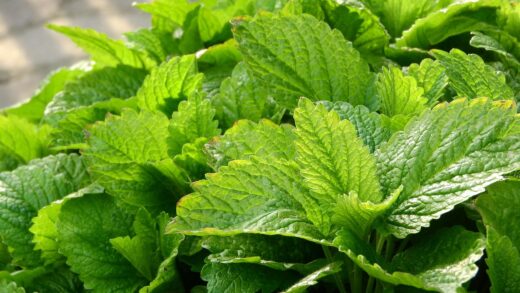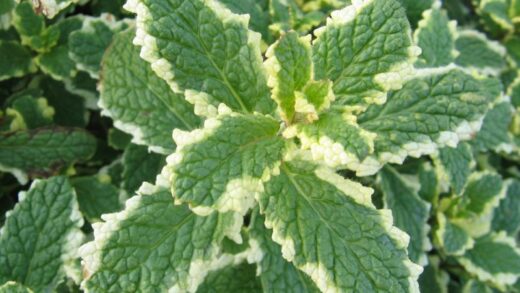Celery, scientifically known as Apium graveolens, is an extremely nutrient-demanding vegetable, and its successful cultivation is unimaginable without a conscious and balanced nutrient supply. Whether it is celeriac, stalk celery, or leaf celery, the fundamental condition for a quality and abundant harvest is a fertilization program perfectly adapted to the plant’s needs. Celery prefers humus-rich, medium-loamy soils with good water management, which can efficiently supply nutrients throughout its long growing season. During nutrient supply, special attention must be paid not only to the quantities but also to the correct ratio of nutrients and the timing of application to achieve maximum results.
During cultivation, the most important aspect is to ensure a harmonious nutrient supply, which includes the replacement of macro-, meso-, and micronutrients in appropriate proportions. Among the macronutrients, nitrogen (N) is the engine of vegetative development, essential for growing lush foliage and large tubers or stalks. Phosphorus (P) plays a key role primarily in root development, energy metabolism processes, and flowering induction, while potassium (K) is responsible for regulating water balance, resistance to diseases, and improving the quality of the produce, especially its storability. A shift in the ratio of these three main elements can lead to serious quality and quantity problems.
Mesonutrients, such as calcium (Ca), magnesium (Mg), and sulfur (S), are also essential for the healthy development of celery. Calcium is fundamental for cell wall stability, and its deficiency can lead to the dreaded blackheart disease, which involves the death of the inner, young leaves. Magnesium is the central atom of chlorophyll, thus the cornerstone of photosynthesis; in its absence, the leaves show characteristic interveinal yellowing. Sulfur is a component of many amino acids and enzymes, contributing to the overall vitality of the plant and the development of the characteristic celery aroma.
Micronutrients, although required only in small quantities, have an unquestionable role in the physiological processes of celery. The role of boron (B) is particularly noteworthy, as its deficiency causes stem cracking and internal hollowing and browning of the tuber, significantly reducing the market value of the produce. In addition, manganese (Mn), zinc (Zn), and copper (Cu) are important cofactors for many enzymes that regulate growth, development, and stress tolerance. When planning nutrient supply, Liebig’s law of the minimum must be kept in mind, which states that the yield is always limited by the nutrient present in the smallest amount.
The role and practice of base fertilization
The purpose of base fertilization is to load the soil with sufficient plant-available nutrients for the entire growing season, with particular regard to less mobile elements. Before applying any fertilizer, it is essential to have a soil analysis performed by an accredited laboratory. This analysis provides an accurate picture of the soil’s existing nutrient content, pH value, and organic matter reserves, allowing for the precise development of a fertilization plan tailored to actual needs. Without it, fertilization is based merely on estimates, which can lead to under- or over-fertilization, environmental pollution, and economic loss.
More articles on this topic
Celery is extremely grateful for organic fertilization, which, in addition to supplying nutrients, also improves soil structure, water retention capacity, and biological activity. The application of well-rotted manure or high-quality compost is a cornerstone of base fertilization, recommended at a dose of 30-50 tons per hectare, applied at least one month before planting. Organic materials provide a slow and continuous nutrient supply while buffering soil pH fluctuations and creating a favorable environment for beneficial soil microorganisms. It is important to use only mature, disease-free organic manure to avoid introducing weed seeds and pathogens.
In addition to or in the absence of organic manure, mineral base fertilization is also necessary to adjust the appropriate nutrient levels. The required amounts of phosphorus and potassium should be determined based on the soil test results, which are typically applied in the form of complex NPK fertilizers. Since phosphorus and potassium move slowly in the soil, it is crucial to incorporate them into the entire root zone depth during base fertilization. Only a small, starter dose of nitrogen should be applied during base fertilization, with the remaining amount supplemented through top dressings during the growing season.
The timing and method of applying and incorporating the base fertilizer are also decisive for its effectiveness. The fertilizer should be evenly incorporated into the soil with autumn deep ploughing or spring seedbed preparation to make it easily accessible to the roots. Leaving the fertilizer on the surface should be avoided, as this can lead to significant nutrient loss (e.g., ammonia volatilization) and the nutrients will not reach the appropriate depth. Properly executed base fertilization creates a stable nutrient supply level for celery, upon which the later intensive growth phases can build.
Strategies and timing of top dressing
Due to celery’s long growing season and dynamic nutrient uptake, base fertilization alone rarely covers the entire nutrient requirement, making top dressing essential for successful cultivation. The essence of top dressing is to supplement the most needed nutrients in a targeted manner during critical phenophases, aligned with the plant’s growth rate. This method ensures that nutrients are available when the plant needs them most, minimizing losses from leaching and maximizing utilization. The first top dressing is usually applied 3-4 weeks after transplanting the seedlings, following their establishment.
More articles on this topic
During top dressing, the most important nutrient to supplement is nitrogen, which is easily leached from the soil and is taken up in large quantities by celery during its intensive foliage growth. It is recommended to apply the total nitrogen dose in at least two or three split applications during the growing season. The first dose should be applied after rooting, the second at the beginning of the intensive phase of tuber or stalk formation, and the third as needed, at least one month before harvest. Excessive or late nitrogen top dressing deteriorates the quality and storability of the produce, resulting in a loose tissue structure and increased susceptibility to diseases.
In addition to nitrogen, supplementing potassium is also of paramount importance during top dressing, especially during the tuber development period. The demand for potassium increases significantly in the second half of the growing season, and an adequate potassium supply is essential for high-quality, shelf-stable produce suitable for storage. It is often applied together with nitrogen as a combined fertilizer or separately in the form of potassium sulfate or chloride-free potassium nitrate. Maintaining the correct N:K ratio is crucial; excessive nitrogen can stimulate uptake at the expense of potassium, leading to a decline in quality.
In modern cultivation systems, fertigation, which is the application of nutrients through the irrigation water, is becoming increasingly common. This technology allows for the extremely precise, even daily, dosing of nutrients, perfectly tracking the plant’s current needs. Through fertigation, nutrients are delivered directly to the root zone, resulting in highly efficient utilization and minimal environmental impact. This method is particularly advantageous for celery as it also allows for the continuous, low-concentration supply of critical nutrients such as calcium and boron.
Special nutritional issues and deficiency symptoms
During celery cultivation, several specific physiological disorders attributable to nutrient deficiencies can occur, among which boron deficiency is the most common and well-known. Boron (B) deficiency causes the death of the growing tip, longitudinal cracking of the petioles, and suberization, browning, and eventual hollowing of the tuber’s interior. These symptoms significantly reduce the market value of the produce, so prevention is crucial. Boron can be supplemented through the soil with borax or solubor during base fertilization, or through repeated foliar applications during the growing season.
Another characteristic problem is blackheart caused by calcium deficiency (Ca), which involves the browning and subsequent death of the tips of the youngest, inner leaves. It is important to understand that this phenomenon is not necessarily caused by low calcium content in the soil, but more often by a disruption in calcium transport within the plant. Calcium moves within the plant along with transpiration, in the flow of water, so uneven water supply, prolonged drought, or excessive humidity can all trigger the symptoms. The basis of prevention is ensuring a balanced water supply and applying calcium nitrate as a top dressing or calcium chloride as a foliar spray.
The symptoms of magnesium deficiency (Mg) primarily appear on the older, lower leaves in the form of characteristic interveinal chlorosis. This means that the leaf veins remain green, while the leaf tissue between them takes on a yellowish, marbled pattern, and in severe cases, dies. Magnesium deficiency reduces photosynthetic activity, leading to weaker growth and lower yields. The problem can be effectively remedied by applying magnesium sulfate (Epsom salt) to the soil or as a foliar spray, which quickly replenishes the missing element.
Finally, the fundamental effect of soil pH on nutrient uptake should not be forgotten. Celery prefers slightly acidic to neutral soils (pH 6.0-7.0). In soils with significantly different pH, either too acidic (pH < 5.5) or too alkaline (pH > 7.5), the availability of certain nutrients is drastically reduced, even if they are present in sufficient quantities in the soil. For example, in acidic conditions, phosphorus, potassium, and magnesium become less available, while in alkaline conditions, iron, manganese, and boron become difficult for the plant to access. Therefore, the first step in nutrient management should always be to optimize the soil’s pH value.


















